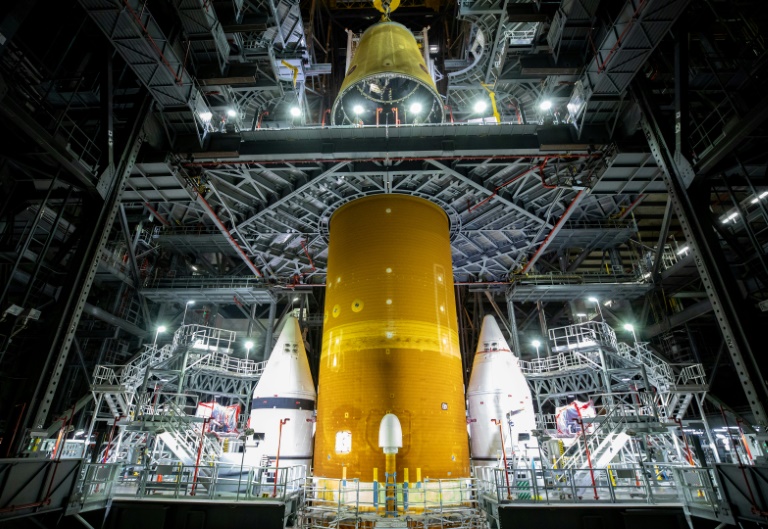NASA's Artemis Program: Searching For Water Ice On The Moon's Surface

Welcome to your ultimate source for breaking news, trending updates, and in-depth stories from around the world. Whether it's politics, technology, entertainment, sports, or lifestyle, we bring you real-time updates that keep you informed and ahead of the curve.
Our team works tirelessly to ensure you never miss a moment. From the latest developments in global events to the most talked-about topics on social media, our news platform is designed to deliver accurate and timely information, all in one place.
Stay in the know and join thousands of readers who trust us for reliable, up-to-date content. Explore our expertly curated articles and dive deeper into the stories that matter to you. Visit Best Website now and be part of the conversation. Don't miss out on the headlines that shape our world!
Table of Contents
NASA's Artemis Program: The Hunt for Lunar Water Ice
The Artemis program is more than just a return to the Moon; it's a quest for vital resources that could pave the way for future lunar settlements and even deeper space exploration. NASA's ambitious plan hinges on a crucial element: water ice, hidden within the permanently shadowed craters of the Moon's poles. This isn't just about quenching astronauts' thirst; lunar water ice represents a potential goldmine of resources for future lunar bases.
Finding and utilizing this ice is a key objective of Artemis, unlocking possibilities previously confined to science fiction. This article delves into the significance of this search and how it will shape the future of space exploration.
Why is Lunar Water Ice So Important?
The presence of water ice on the Moon holds immense significance for several reasons:
-
Sustainable Lunar Habitats: Extracting water ice allows for the in-situ resource utilization (ISRU). This means astronauts can produce potable water, oxygen for breathing, and even rocket propellant, reducing the reliance on expensive and risky Earth-based launches. This dramatically lowers the cost and complexity of long-term lunar missions.
-
Scientific Discovery: Studying lunar water ice provides valuable insights into the history of our solar system. Analyzing its isotopic composition can reveal clues about the origin of water on Earth and the processes that shaped the Moon's formation.
-
Fuel for Deep Space Exploration: Water ice can be broken down into hydrogen and oxygen, providing a readily available propellant for future missions to Mars and beyond. This reduces the need to carry massive amounts of fuel from Earth, making deeper space exploration more feasible.
Artemis' Role in the Search for Lunar Water Ice
The Artemis program is specifically designed to facilitate this crucial search. Several missions are planned to directly investigate and utilize lunar water ice:
-
Artemis I (Completed): While primarily a test flight, Artemis I provided valuable data about the journey to the Moon, paving the way for future crewed missions.
-
Artemis II (Planned): This crewed mission will orbit the Moon, further testing systems and preparing for a lunar landing.
-
Artemis III (Planned): This mission aims to land astronauts near the Moon's south pole, a region believed to contain significant quantities of water ice. Astronauts will conduct scientific experiments and deploy technology to assess the ice's abundance and accessibility.
-
Commercial Partnerships: NASA is partnering with private companies like SpaceX and Blue Origin to develop technologies for lunar water ice extraction and utilization. This public-private collaboration accelerates innovation and reduces the financial burden on the space agency.
Technological Challenges and Future Prospects
Extracting and utilizing lunar water ice presents several engineering challenges. The extreme temperatures and challenging terrain of the lunar surface require robust and reliable technologies. NASA is actively developing advanced robotics, drilling systems, and processing techniques to overcome these hurdles.
The successful extraction and utilization of lunar water ice represents a giant leap forward in space exploration. It paves the way for a sustainable human presence on the Moon, acting as a crucial stepping stone for future missions to Mars and beyond. The Artemis program is not merely a return to the Moon; it's a pioneering effort to unlock the Moon's potential and establish humanity's foothold in the cosmos. Stay tuned for updates as this exciting chapter in space exploration unfolds!
Call to Action: Learn more about the Artemis program by visiting the official NASA website. [Link to NASA Artemis Program Website]

Thank you for visiting our website, your trusted source for the latest updates and in-depth coverage on NASA's Artemis Program: Searching For Water Ice On The Moon's Surface. We're committed to keeping you informed with timely and accurate information to meet your curiosity and needs.
If you have any questions, suggestions, or feedback, we'd love to hear from you. Your insights are valuable to us and help us improve to serve you better. Feel free to reach out through our contact page.
Don't forget to bookmark our website and check back regularly for the latest headlines and trending topics. See you next time, and thank you for being part of our growing community!
Featured Posts
-
 Randy Moss Names His Choice For The Greatest Wide Receiver Ever
Jul 13, 2025
Randy Moss Names His Choice For The Greatest Wide Receiver Ever
Jul 13, 2025 -
 Diogo Jotas No 20 Jersey Retired A Liverpool Legend Honored
Jul 13, 2025
Diogo Jotas No 20 Jersey Retired A Liverpool Legend Honored
Jul 13, 2025 -
 Post Gop Tax Cuts Rep Khanna Focuses On South Carolina As Decisive Battleground
Jul 13, 2025
Post Gop Tax Cuts Rep Khanna Focuses On South Carolina As Decisive Battleground
Jul 13, 2025 -
 Mariners Trade Target Insider Jim Bowden Names All Star Closer
Jul 13, 2025
Mariners Trade Target Insider Jim Bowden Names All Star Closer
Jul 13, 2025 -
 Unlikely All Star Jacob Misiorowskis Rapid Ascent In Mlb
Jul 13, 2025
Unlikely All Star Jacob Misiorowskis Rapid Ascent In Mlb
Jul 13, 2025
Latest Posts
-
 Euro 2025 Belgium Defeats Portugal 2 1 In Crucial Match
Jul 13, 2025
Euro 2025 Belgium Defeats Portugal 2 1 In Crucial Match
Jul 13, 2025 -
 Score Free Tickets To The California State Fair
Jul 13, 2025
Score Free Tickets To The California State Fair
Jul 13, 2025 -
 Unveiling The Top 10 Mlb Teams With The Highest All Star Count
Jul 13, 2025
Unveiling The Top 10 Mlb Teams With The Highest All Star Count
Jul 13, 2025 -
 Victory For Spain Against Italy At Euro 2025 Both Progress To Quarters
Jul 13, 2025
Victory For Spain Against Italy At Euro 2025 Both Progress To Quarters
Jul 13, 2025 -
 Community Mourns Death Of 8 Year Old In Texas Floods Impacts Trinity Oc
Jul 13, 2025
Community Mourns Death Of 8 Year Old In Texas Floods Impacts Trinity Oc
Jul 13, 2025
